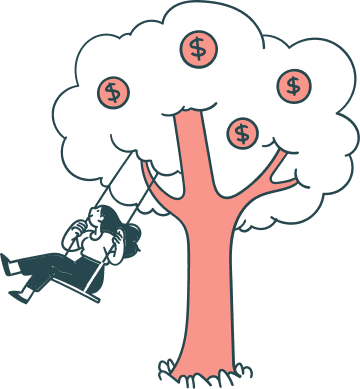The nonprofit sector operates on trust—many donors will only contribute to organizations they know are reputable and will use their gifts to make a real difference. But in a 2024 survey, 57% of U.S. adults said they trust nonprofits, showing that there is still room for improvement.
Financial transparency is essential for building trust with your nonprofit’s supporters, and properly tracking your funding makes it possible to be open and honest about your finances. Revenue recognition might seem complex at first, especially if your organization is just getting started. However, you need to understand it not only to strengthen your donor relationships, but also to ensure compliance with nonprofit legal requirements.
In this guide, we’ll walk through three key things to know about nonprofit revenue recognition to set your organization up for increased transparency and trust. Let’s get started!
1. Understand the Primary Types of Nonprofit Revenue Transactions
Any time money comes into or goes out of your nonprofit’s accounts, it’s known as a transaction. According to Jitasa’s nonprofit revenue recognition guide, there are two common types of revenue transactions that you should distinguish between in your records—let’s dive deeper into each one.
Contribution Transactions
Contribution transactions occur when your nonprofit receives funding without the contributor getting (or expecting to get) anything in return. Here are a few common examples:
- Traditional monetary donations from individuals, including small, mid-sized, major, and planned gifts.
- Most in-kind donations of goods, services, or non-cash assets (stocks, real estate, etc.).
- Some types of corporate giving, such as matching gifts and volunteer grants.
- Almost all grants from foundations and government agencies.
Record contribution transactions in your accounting system as soon as you know the full amount your organization will receive, even if it doesn’t come all at once. For example, if a major donor agreed to give a total of $20,000 to a capital campaign but wanted to make their donation in quarterly installments of $2,500 over two years, you’d go ahead and record $20,000 as soon as they signed their donation pledge.
Exchange Transactions
Exchange transactions happen when an individual or organization gives to your nonprofit with the expectation of receiving something in return (i.e., something more than just a thank-you note or tax deduction). Examples of exchange transactions include:
- Corporate sponsorships (since you’ll usually provide free publicity for your sponsors in return for their support)
- Membership dues
- Merchandise sales
- Product fundraisers
- Event ticket and auction item sales
- Crowdfunding and peer-to-peer campaigns where supporters can receive incentives or “perks” for donating at certain levels.
- Fees for mission-related services (e.g., admission to a museum or low-cost vaccine clinics at an animal shelter)
Because you can’t record an exchange transaction until after the promised good or service has been delivered to the supporter, you’ll recognize this type of revenue more quickly in some cases than others.
For example, if a supporter who wins an auction item pays in person and takes their prize home with them, you can record that revenue right away. But if you open registration for the auction three months in advance, you can’t recognize any prepaid tickets until you admit those supporters to the event (a situation known as deferred revenue).
2. Track Restricted Funds Separately
Another important categorization factor to understand in nonprofit revenue recognition is restricted funding, which are funds that the contributing individual or organization designates for a specific purpose. When supporters donate large amounts, they typically want some control over how that funding furthers your mission, so they’ll stipulate that you can only use it for a program, project, or other initiative they’re passionate about.
In your accounting system, create three categories for tracking funding restrictions as follows:
- Permanently restricted funds: These contributions usually take the form of endowments. As Infinite Giving’s nonprofit endowment guide explains, your nonprofit doesn’t spend this revenue directly but instead places it in an investment account and spends the interest it generates on a donor-designated initiative.
- Temporarily restricted funds: The stipulations on these funds apply to a specific project or time period. Once the project is finished or the time period elapses, any leftover funding may be used for other initiatives, depending on your agreement with the donor. Most major and planned gifts, grants, and corporate sponsorships (the one commonly restricted exchange transaction) fall into this category.
- Unrestricted funds: This revenue doesn’t have any donor designations associated with it, so you can put it toward any of your organization’s needs. Most small to mid-size contribution and exchange transactions are unrestricted. However, if you tell donors that you’ll use the revenue from a campaign for a specific purpose, it’s in your best interest to follow through on that promise to maintain strong relationships with those supporters.
Honoring funding restrictions also strengthens supporter relationships, but doing so is even more important because legal issues can arise (donor lawsuits, IRS-imposed penalties, etc.) if you misallocate restricted funds. When you configure your organization’s accounting software, make sure to set up restricted fund tracking right away to prevent these risks.
3. Be Careful With Grant Recognition
Grants are often the most challenging nonprofit revenue source to track properly. Not only are they usually restricted, but different grant-makers have their own systems for paying out funding and requirements for management and reporting.
As far as grant recognition goes, there are three types of grants you should be aware of that you’ll need to record at different times, which are as follows:
- Unconditional grants are paid out all at once with no strings attached. You’ll record these like you would any other contribution transaction—as soon as you receive the award letter, even if the funding takes more time to arrive.
- Conditional grants are provided in installments, but you’ll only receive payments as long as your organization meets funder-imposed requirements (for example, a grantmaker may only agree to fund a community program as long as there are a certain number of participants enrolled in it). Record the first installment of these grants when you get the award letter and subsequent payments as you receive them.
- Reimbursable grants ask your nonprofit to spend its own funding on an initiative up front, keep a detailed list of expenses, and submit that information to the grantmaker so they can reimburse you. Since you won’t know exactly how much you’ll get until the grantmaker reviews your expense list, wait to record these grants until you receive the payment.
When you find a grant opportunity you’d like to apply for, note which of the above categories it falls into so you’re prepared to recognize the funding correctly if you win the grant.
The tips above should provide your nonprofit with a strong foundation for proper revenue recognition. If you need help or have questions along the way, don’t hesitate to reach out to a nonprofit accountant. With their professional expertise, they can make sure your accounting system is set up correctly, create accurate reports based on your recorded data, and recommend next steps to help your organization make the most of its resources.



